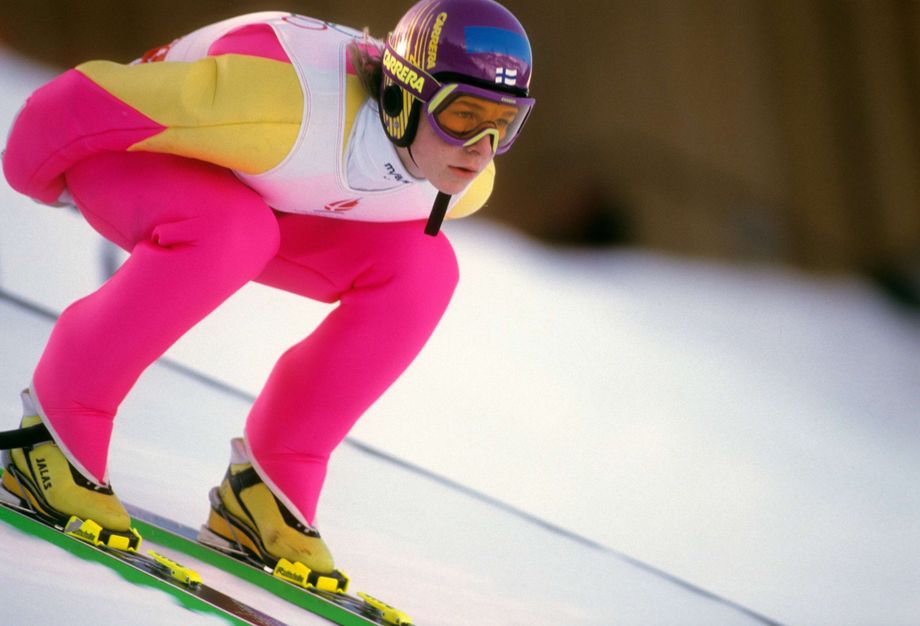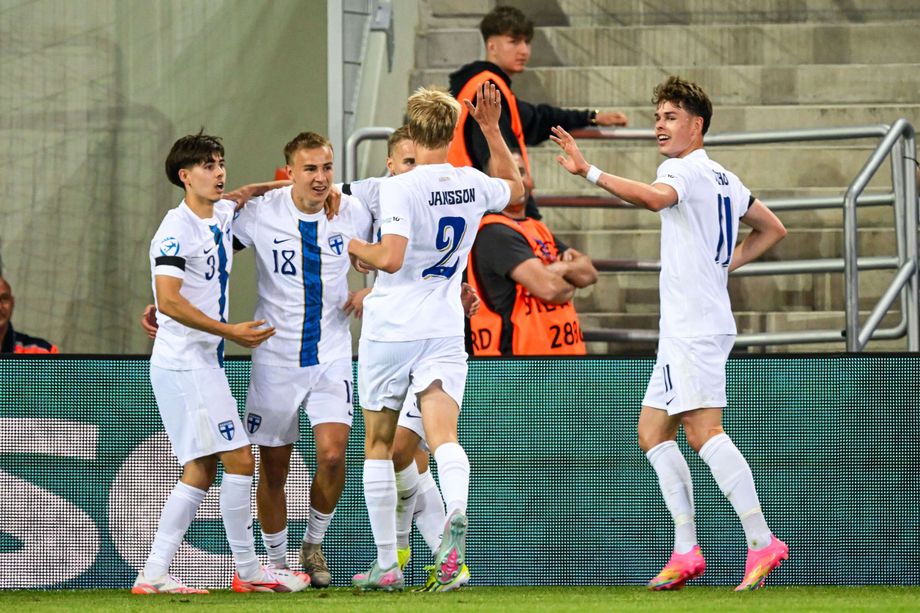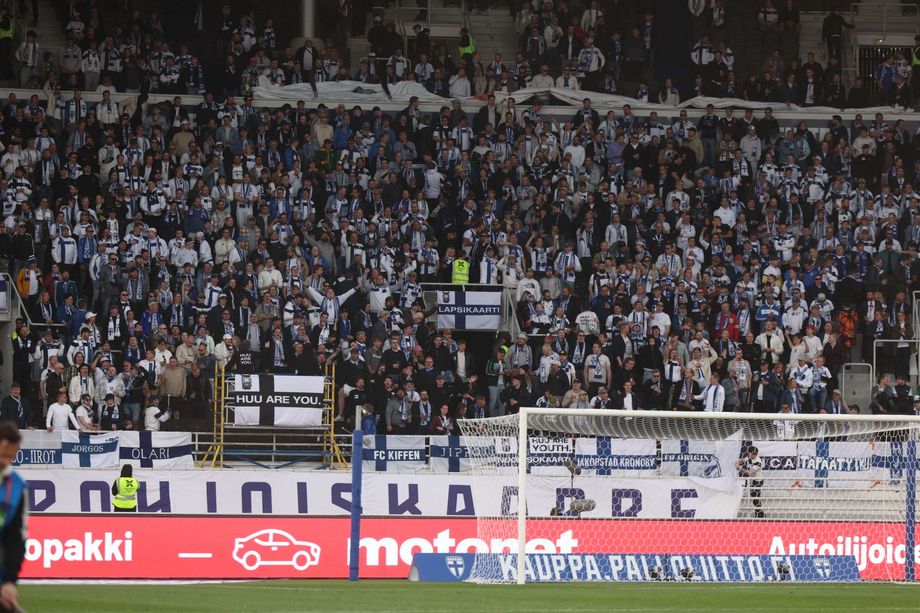Toni Nieminen was wild about the Austrian’s trick: “You won’t be laughing for long, grandpa”
Toni Nieminen, the youngest male athlete of all time to win gold at the Winter Olympics, turns 50 on Saturday, May 31.
- The success of the 16-year-old hill wonder sparked a huge fan phenomenon in Finland.
- Nieminen recalls the highs and lows of his career in his colorful way.
Albertville Olympics, Friday afternoon, February 14, 1992.
Baby-faced, only 16-year-old Toni Nieminen is in a tough spot. Really tough.
The big pre-season favorite Austria leads by a convincing 30.9 points ahead of second-place Finland, while the top two anchors are still waiting for their turn to jump in the second round.
– Definitely the tastiest moments of my career, Nieminen says.
A fierce will to win
Before the team hill, Nieminen had already won a medal in the normal hill. The result of that competition was also reflected in the decisive moments of the team hill.
“The story goes back to the award ceremony on that small hill,” Nieminen says.
– That bronze was a complete disappointment. Austria won the double, and I came third. I was so determined to win that I was as angry as a wasp. In my opinion, I had jumped badly.
I stayed
– “In retrospect, it’s quite comical that a 16-year-old takes bronze in his first Olympic start and almost throws his boots against the wall of the locker room,” Nieminen smiles.
Ernst Vettori and Martin Höllwarth rose to the highest podiums.
– I had a real teenage angst at that awards ceremony. I still remember the anger when I thought to myself, “Oh my god, the Austrian national anthem won’t be played at these games anymore!”
– Then we went to the team hill, and maybe that fighting spirit and self-confidence caught on with others, Nieminen refers to Ari-Pekka Nikkola, Mika Laitinen and Risto Laakkonen.
– We shouldn’t have had any division against Austria, but everyone stretched and we jumped well as a team.
Spiritual War
Nieminen returns to the hilltop tower in his memories alongside Austrian anchor Andreas Felder.
“They threw a more experienced ring fox at me,” he says of the Austrian, who is 13 years older than him.
Felder used all the means of spiritual warfare in the tower. Nieminen gives an example.
– When Risto Laakkonen jumped third for us in the second round, I started clapping because I thought it was a good jump. Felder tied his mono ropes, looked at me, smiled a little and shook his head arrogantly.
“That’s when I started to get angry,” Nieminen says, still sounding angry.
– I still remember that feeling. I thought, damn it, you won’t be laughing at that for long.
– I felt like I could win this race all by myself. I didn’t care about the wind or anything. I just thought, change the green light, here we go!
The sweetest honey
The wind conditions were not the best.
– I don’t know where it came from, but it was actually a pretty incredible jump, Nieminen says of his 122-meter leap.
Felder was then required to jump 111 meters to win gold, but the three-time world champion’s nerves failed him and his jump only reached 109.5 meters.
Finland won gold by 1.5 points over Austria.
– It was a completely absurd feeling. It wouldn’t have been worth Felder’s while to anger the Finn, Nieminen laughs.
Everything was crowned by Suurmäki’s Olympic victory on the final day of the games.
– It seems arrogant to say, but I took it for granted that it was my race. I just went to get mine.
– Personal gold is always personal gold, but that team gold was the sweetest of my career, Nieminen appreciates.
– We came from the back left, and we got to share it with our teammates, he explains.
On the way to the awards ceremony, the Finns were able to drink the victory champagne that the Austrians had already reserved.
Toni hysteria
The Lahti native, who returned from Albertville with three medals under his belt, attracted a record 120,000 spectators to the Salpausselkä Games at the turn of February and March.
He also set a record on the hill: 125 meters on a beautiful telemark descent.
“New Kids On The Block last summer was good practice for us, considering this Toni hysteria,” Kyösti Puikkonen, who led an army of 400 security guards, compared to Iltalehti.
“The age structure and behavior of the audience are similar. They scream, they carry soft toys and they idolize their target,” the security officer continued.
The incredible fan phenomenon surprised Nieminen.
– It was uncontrollable and uncontrollable, it was something so incredible, he remembers.
– I was looking at it with my eyes wide open, wondering what this circus was all about. Sometimes I felt like I was being led like a ram on a string, when all I wanted to do was live out my own youth and jump off a hill.
However, Nieminen remembers that time with gratitude.
– It was quite a school of life, and in my opinion I came out of it with my skin intact, thanks to my family and down-to-earth upbringing.
Golden Age
Nieminen started ski jumping at the age of 8. The choice of sport was easy for the boy from Lahti.
– For my age group, it was obviously Matti Nykänen, he answers the question about the role model.
– I am from the generation that lived in a world where people watched ski jumping and only thought about how superior Nykänen is today.
The sport was a powerhouse in Finland.
– It was the golden age of ski jumping. In Lahti, you were a pretty tough guy on the streets just because you were a ski jumper.
Nieminen was a tough guy. At the age of 13, he already showed off his talents among older jumpers and served as a test jumper at the 1989 World Championships in Lahti.
– I have inherited athletic genes and have practiced and tried many other sports: skiing, athletics, football, he lists.
– And I did gymnastics for a long time. However, ski jumping was always clearly my number one sport.
Master of V-style
Sweden Jan Boklöv began jumping in the mid-1980s with the V-style, which revolutionized the sport. However, the style, which increased the landing area, was initially slow to become popular.
“We were going through a period of puberty at the time, and it was strongly coming into the sport,” Nieminen recalls the spring of 1991, when he himself switched to the V-style.
He quickly became a pioneer of the new technology.
– My brain, courage and athleticism allowed me to take on new things. When I combined that with the fact that I was significantly more skilled than average, I had a clear competitive advantage.
The change in style originally started as a playful experiment.
– Last winter, at a school sports association competition, I got nervous when I failed in the first round. When I realized that I couldn’t win this competition anymore, I had such an aha moment that I decided to take the next round with a V.
Nieminen’s personal trainer Jarkko Laine was awake and reading a study commissioned by the Germans on the subject.
– Then in the spring, when we were about to start the new training season, Jarkko brought it up and said that he thought this was the future of ski jumping.
Winning Streak
The vision hit the nail on the head, but the future was closer than anyone could have expected.
In the fall, at the first snow camp, the pieces fell into place, and Nieminen’s 1991–92 season became historic.
– I started to think about it myself, wait a minute, what’s going on here, he’s laughing.
The Finnish teenager immediately won his first World Cup race in Thunder Bay, and with a total of eight wins, he became the youngest overall winner.
Nieminen was also the youngest to win the Central European Ski Week – in show style. The season also produced three Finnish Championship gold medals and two youth world championships.
A difficult equation
The perfect season was the only one of its kind in Nieminen’s career. Of course, he has thought about the reasons for it and knows how to be kind to himself.
– It was such an incredible season, something that rarely happens to any athlete. To win practically everything.
– It happened to me right after my first international season. The bar was set at that level, and expectations made no sense after that. For me, failure meant I was second, Nieminen says, citing the pressure created by the media.
– He started to catch himself quite suddenly for those failures, and of course he blamed himself for it.
– When you had to set goals for yourself at the same time, even though everything had already been achieved, it wasn’t an easy equation.
Flag bearer
Nieminen later won one more World Cup event, in Puijjo in 1995, and on the hill he was the first to cross the 200-meter mark while standing upright and was seventh at the World Championships.
There were other worthy achievements too – ones that many other hill climbers could be proud of – such as fifth place on a normal hill at the World Championships in Falun in 1993.
Stories about a shooting star in one season are a bit annoying for Niemännäs.
– Of course, I also think that there was room for improvement, but it wasn’t like that one season and that’s it.
that’s it
As early as the 2002 Olympics, Nieminen jumped to 16th place in the normal hill.
– I consider one of the hardest tricks of my career, after all the hard work, to be at the Salt Lake City Olympics and carry the Finnish flag at the opening ceremony.
– That was a big deal for me. It was a testament to the growth story that it took to get back to that level. That was the biggest success, because there was a risk that something bad could have happened along the way.





